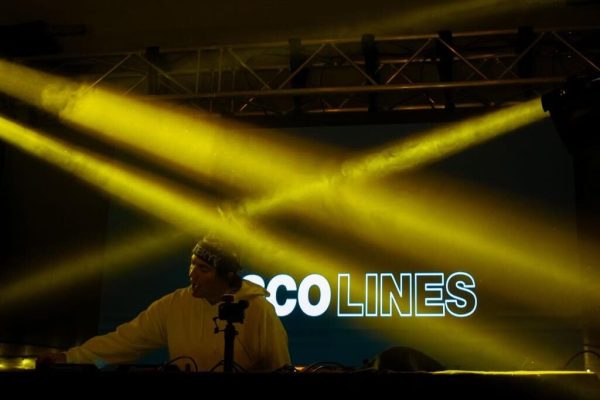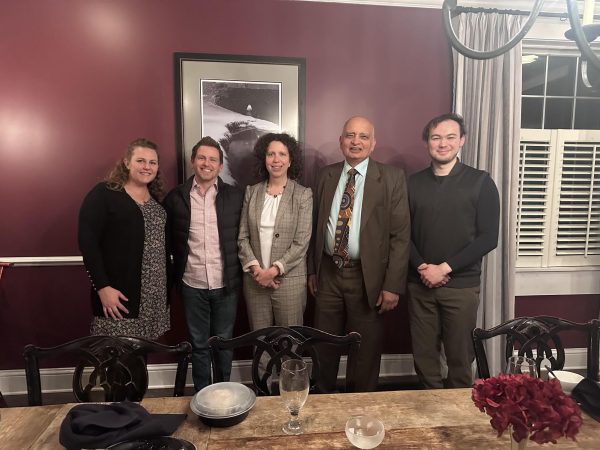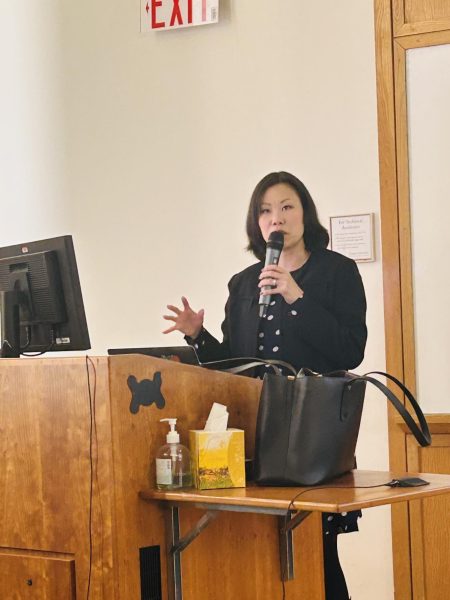Humanities Colloquium Features Chris Vecsey
Drawing a packed house in Tuesday’s Humanities Colloquium, Harry Emerson Fosdick Professor of the Humanities, Native American Studies and Religion, Professor Chris Vecsey moderated a roundtable discussion with several other Colgate faculty members on how The New York Times covered religion in the aftermath of 9/11. Vecsey published the book Following 9/11: Religion Coverage in the New York Times this past July, which served as the inspiration for Tuesday’s discussion.
Professor Vecsey’s book chronicles how the The New York Times portrays religion in a post-9/11 world, with a special emphasis on the weeks immediately following the catastrophe. Since that fateful day, Vecsey clipped out every article from The New York Times that had a religious focus or connotation and discovered something unexpected.
“A big thing that the paper noticed is that their clientele want to read about religion,” Vecsey said. “If you publish articles about religion, you’ll get people who want to read the paper, buy the paper.”
This revelation fascinated Vecsey and inspired him to examine how The New York Times portrays religion on a daily basis. He found that the paper’s favorite religious topics normally include scandal, gender, political entanglement and sexuality. However, during a time of crisis the paper shifts its religious focus to a single area: tolerance. Vecsey found that, besides merely bringing readers the news, The New York Times also acts as a conciliatory body for the public in times of distress. This served as the inspiration for his book.
After a short introduction to the topic, Vecsey opened the floor to an inter-departmental forum on a slide show of photographs. During the forum, many professors, including Murray W. and Mildred K. Finard Professor in Jewish Studies and Religion and Director of Jewish Studies Steven Kepnes, Russell Colgate Distinguished University Professor of Astronomy and Anthropology and Native American Studies Anthony Aveni and Associate Professor of Philosophy and Environmental Studies Jason Kawall shared their perspectives on photos published in The New York Times that displayed how people around the world were coping with the attacks.
A point discussed at length in the colloquium was that of the significance of shrines which honored those who perished on September 11th, 2001. These shrines were quickly established in public places all around the world. The characteristics of a shrine included, but were not limited to, laying down flowers, lighting candles, setting up pictures of loved ones and the hanging of flags. The question was whether these shrines had primarily secular or religious motivations. Charles A. Dana Professor of English; Director, Division of the Arts and Humanities Linck Johnson believed that the term “shrine” is a misnomer, since many of the shrines contained little to no religious imagery. However, Vecsey drew attention to the fact that many of these shrines were constructed at religious sites, such as Trinity Church in New York City, because religion naturally emits a sense of peace and conciliation.
Vecsey and his colleagues had the audience so thoroughly captivated that one could hear the sighs of disappointment when the colloquium came to an end.
“I thought it was really informative,” sophomore Albert Boateng said, reflecting on what he had learned from the discussion. “Most of the time [prayer] is done to bring hope to the people or because it is the most reasonable thing to do at that point in time.” His only regret was that the colloquium ended rather quickly, preventing an exhaustive discussion on the topic.
“Newspapers are not going to disappear,” Vecsey said when questioned about the future of printed media. “There may just be fewer of them left and be less profitable… but they will not disappear.” Vecsey is similarly optimistic about the future of religion in the news.
“If you publish articles about religion, you’ll get people who want to read the paper. So, I actually think that religion is in a very solid place in the eye of journalism in the United States. I don’t see it failing.”
Contact Matthew Knowles at [email protected].






